News
March 11, 2015
Massive global Offshore Wind conference backed by UK and European Associations announced for London
March 10, 2015
Offshore wind industry can compete with gas and coal within a decade
March 4, 2015
Video message from Event Ambassadors
The offshore wind power industry has tremendous potential, but to achieve that potential, the industry must collaborate. MHI Vestas Offshore Wind, DONG Energy and Siemens Wind Power—three of the industry’s biggest players and our event partners for EWEA OFFSHORE 2015—have initiated a joint declaration outlining the concept of a “United Industry.” The goal of the declaration is to inspire the industry to come together around the promise of reducing its cost of energy.
This concept will be discussed further at the EWEA OFFSHORE 2015 opening session. The opening session is open to both conference delegates and exhibition visitors, so everyone at the event will have the opportunity to hear the event ambassadors share their thoughts on industry collaboration. See who else will be speaking in the session programme on the event website.
February 25, 2015
A United Industry at EWEA OFFSHORE 2015
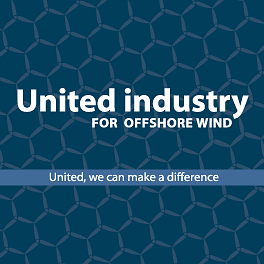
Hear from the Event Ambassadors in the opening session on 10 March (9:30 – 11:00) Open to all event participants
Three of the biggest players on the European offshore wind stage — Danish developer-utility Dong and turbine makers MHI-Vestas and Siemens — have taken the extraordinary step of putting their names to a document intended to unify the sector at a critical point in its history. Top of their Joint Declaration for a United Industry: cost-reduction.
After years of stop-start progress, the industrialisationof offshore wind is gaining momentum, but has many hurdles lying ahead. Screwing down the cost of technology, construction and operation of wind farms to a levelised cost of energy (LCoE) under €100 ($116) per MWh — at deeper-water, far-from-shore projects — would put fresh winds in the sails of a sector that is closing in on grid parity with conventional fuels.
In fact, if one applies wind-power godfather Henrik Stiesdal’s societal cost of energy (SCoE) equation, which factors in social, environmental, economic and geopolitical factors, there is every reason to belief that the 30GW of offshore wind forecast to be humming off Europe by the end of the decade will be flowing to market at a price near that of onshore wind, beating hydrocarbons, nuclear and other renewables.
Cost-reduction comes in many guises. Dong’s executive vice-president for wind, Samuel Leupold, acknowledges the important contributions coming from technology development, project financing and O&M, but thinks the industry should first be taking aim at a far more fundamental target — location.
“We keep preaching internally that site selection is key — finding more suitable development sites to drive costs down,” says Leupold. “There is no doubt that many sites being built out in the past were not ideal in terms of wind speeds and seabed conditions, and too small in terms of economies of scale.
“In this regard, our industry has to become normal: like all other power-generation technologies, if you build a gas-fired power plant or a hydropower dam in the wrong place, it will not be cost-competitive….”
Read the rest of this article at Recharge News.
February 18, 2015
New industrial alliance collaborates on cost reduction
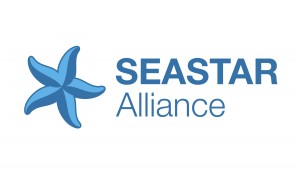 SEASTAR Alliance, a new collaborative group within the European offshore wind industry, has formed to strengthen industry developments in the Northern Seas.
SEASTAR Alliance, a new collaborative group within the European offshore wind industry, has formed to strengthen industry developments in the Northern Seas.
SEASTAR Alliance was originally formed in 2014 to identify the industry successes and challenges, but will formally launch its program of work as a value adding industry group, bringing national successes and opportunities for cooperation to the European forefront.
“SEASTAR Alliance is all about international collaboration and knowledge sharing. We invite everyone to find out what we’re doing to reduce costs together at our launch at EWEA OFFSHORE 2015” says Andreas Wagner, Managing Director of Stiftung Offshore-Windenergie.
The alliance aims to encourage international cooperation within the industry, and it intends to use connections in both the industry and in governmental bodies to pursue cost reduction, knowledge sharing and offshore grid development.
The founding members of SEASTAR Alliance are Adam Bruce of the UK Crown Estate’s Offshore Wind Programme Board, who serves as the alliance’s chair, Andreas Wagner of Germany’s Offshore Wind Energy Foundation and Jørgen Skovmose Madsen of Danskenergi, and TKI Wind Op Zee has recently joined to represent the Netherlands.
The group has already been in early contact with the European Commission’s DG Energy prior to its official launch, and it hopes to continue working closely with regulatory officials from the EU and Member States, alongside all levels of the offshore wind industry to achieve cost reduction goals, promote best practice, and work collaboratively on offshore transmission.
SEASTAR Alliance will launch at EWEA OFFSHORE 2015 on Wednesday 11 March. All registered event participants are welcome to attend. For more information, visit http://www.ewea.org/offshore2015/networking/seastar-alliance/.
“Sharing experiences can bring down costs”
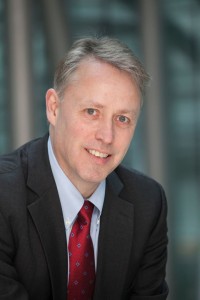
Anders Soe Jensen
VP Deputy for Offshore Wind Business at Alstom Power
Learning from each other is a key factor in bringing down costs says Anders Soe Jensen, VP Deputy for Offshore Wind Business at Alstom Power and confirmed Topic Leader for Supply chain, logistics and O&M at EWEA OFFSHORE 2015. We spoke to him to find out more.
Reducing costs is a major topic of discussion in the wind energy industry right now, why do costs need to come down?
If we as an industry do not manage to bring down the levelised cost of electricity, this industry will die, it is that simple. In the long run society will not keep on funding this industry if we cannot become competitive with other sources of energy. However, we should have a discussion about what the levelised cost of electricity actually is for all sources of energy, i.e. coal, oil, gas or nuclear. This calculation should encompass all costs, including the cost of pollution and all subsidies, direct and indirect.
February 11, 2015
Science & research topic leader advocates collaboration
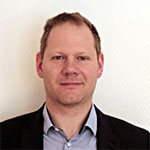 Dr. Michael Muskulus is an Associate Professor in the Department of Civil and Transport Engineering and Head of Offshore Wind Turbine Technology Group at the Norwegian University of Science and Technology. As the Science and Research topic leader for EWEA OFFSHORE 2015, he’s compiled a programme for two conference sessions full of the best and most advanced research on the offshore wind industry. We spoke with him about some of these technological innovations and the importance of collaboration among the industry, the EU and academia.
Dr. Michael Muskulus is an Associate Professor in the Department of Civil and Transport Engineering and Head of Offshore Wind Turbine Technology Group at the Norwegian University of Science and Technology. As the Science and Research topic leader for EWEA OFFSHORE 2015, he’s compiled a programme for two conference sessions full of the best and most advanced research on the offshore wind industry. We spoke with him about some of these technological innovations and the importance of collaboration among the industry, the EU and academia.
What important technological advances have been made in offshore wind technology in recent years?
In science & research we focus a lot on long-term objectives, and our developments can take some time before they impact current technology. That said, some of the more interesting developments in recent years seem to be in LiDAR [a remote sensing technology that can be used to increase energy output by measuring wind speed and turbulence], in controller design and related to hydrodynamic and geotechnical issues, for example in the design of very large monopiles. We have also seen a lot of testing going on lately, both with real turbines and in model scale, that result in important, novel data for improving the design and performance of wind turbines.
What developments are currently being worked on and when do you hope they will be ‘live’?
There is a lot of effort going into improving our numerical models, e.g. on the representation of the environment and its accuracy, which is important for offshore wind resource assessment and getting more realistic predictions of turbine loads, such as from turbulence and operation in wakes. Interesting work is being done on improving wind turbine control with real-time information about the environment (sometimes obtained from LiDAR technology) and on the wind farm level. A new focus area is the operational side, so we currently see a lot of important developments related to improving logistics of marine operations and maintenance of wind turbines.
What advances do we need to make to bring down the costs of offshore wind energy?
Reducing the cost of offshore wind energy is the central theme for most of us, but it is also a very complex issue. There is a tendency within most of us to reduce the complexity and simplify the problem as much as possible, but this is dangerous. What we need to do instead is to consider the problem in a holistic way that captures all the relevant effects – including manufacturing, logistics and maintenance costs in the design of wind farms, as well as market and financing aspects. As most of these effects contain an element of uncertainty, we need new probabilistic ways of assessing projects, technological developments and their risks, and we need the people that can properly understand these methods. Finally, we need the industry to work together and with us in academia much more than previously, if we want to see real improvements.
How important is EU funding and policy in supporting offshore science and research?
Funding initiatives established by the EU are very important in stimulating new developments, this is a simple fact. As this is a truly European industry that needs cooperation beyond national borders, there are limits to what national funding alone can accomplish. On the other hand, EU funding priorities, such as for floating technology during the EU’s FP7 research programme, have a slightly longer horizon than most companies have nowadays. I am also critical about the focus on industry participation and measurable success in terms of impact and relevance that EU projects require. There are some very interesting and important ideas that we cannot get funding for, since we cannot find industry partners to support these high-risk research activities. These issues are often too applied for basic research funding, however. In the past funding was more often available for an interesting idea alone. Although quite a lot of these projects would not be successful, the ones that were completely justify the funding decisions.
As chairperson of the science and research topic at EWEA OFFSHORE 2015, what do you hope participants will learn from the conference sessions?
It is my hope that participants of EWEA OFFSHORE 2015 will get an update on what is currently happening in science & research, and what could be interesting for them to look at in more detail or even collaborate on. When compiling the programme, we have tried to showcase the most important recent developments, and thanks to the high quality and volume of the submissions, we have come up with some very interesting sessions. I also hope that participants will use the opportunity to meet and discuss with the presenters in between and after the sessions.
What do you hope to gain from the EWEA OFFSHORE 2015 event?
Personally, I am looking forward to meet with many of my colleagues and peers at EWEA OFFSHORE 2015, to discuss present and future work, and possibly also establish some new projects. In the past, EWEA OFFSHORE conferences have always been a rather intensive and fruitful place, and I have often left stimulated and with a bag of new ideas. I hope to experience the same again in Copenhagen.
For more information on the Science and Research sessions and to view the rest of the EWEA OFFSHORE 2015 conference programme, click here.
Revolutionary design tool simplifies offshore planning
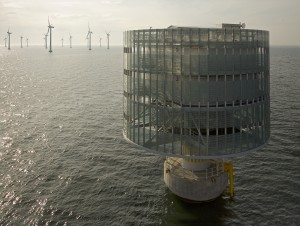 As the offshore wind power industry continues to grow, planning and designing offshore wind farms is becoming more and more important and challenging since a higher density of turbines in a given area can affect wind conditions more significantly than onshore.
As the offshore wind power industry continues to grow, planning and designing offshore wind farms is becoming more and more important and challenging since a higher density of turbines in a given area can affect wind conditions more significantly than onshore.
That’s why the European Energy Research Alliance (EERA) has spent the last three years working on a multidisciplinary, integrated software tool: Wind and Economy (WindEco). Funded by the EU through its Seventh Framework Programme and coordinated by the Technical University of Denmark, the EERA-DTOC project set out to develop a tool to optimise strategic planning and design for new offshore wind farms.
WindEco synchronises models that measure wakes, predict energy yield and optimise power plant systems so strategic planners can determine the best possible location and layout for new clusters.
EERA-DTOC will be presenting the results of their research and unveiling the design tool at EWEA OFFSHORE 2015 on 10 March in a side event open to all event participants. Click here for more information.
February 3, 2015
EWEA releases 2014 offshore report
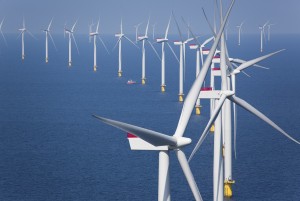 On Friday 30 January, EWEA released its annual offshore report containing key trends and statistics on the European offshore wind industry.
On Friday 30 January, EWEA released its annual offshore report containing key trends and statistics on the European offshore wind industry.
Last year, offshore wind energy delivered only 1 percent of Europe’s electricity demand. The industry has the potential to contribute a far greater amount than that, but to achieve its potential, a great deal more wind farms and turbines will need to be financed and built.
There is promising interest in investing in the offshore wind industry. Last year, nine new projects reached the final investment decision stage, and four of those were billion-Euro projects. The EIB alone has provided nearly €1 billion to the offshore industry, and policymakers had a hand in almost all major transactions this past year.
To secure more financial support, the industry needs to show it can deliver on cost reduction. This will be the main focus of the conference at EWEA OFFSHORE 2015. Experts will be speaking on methods for reducing cost throughout the value chain in order to lower the CoE for offshore wind so the industry can take its place in a future of renewable energy.
EWEA publishes its European offshore statistics biannually. EWEA members get in-depth knowledge and direct links to EWEA’s in-house team of experts. Find out more about EWEA membership benefits: http://www.ewea.org/membership/
January 28, 2015
The offshore wind industry announces their new year resolutions for 2015
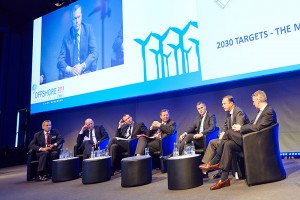
Onshore wind energy has become cost competitive with non-renewables when externalities are considered, but for the offshore sector, there are many technical, financial and political challenges still to overcome. So what direction should the offshore wind industry take in 2015 to meet those challenges and to keep itself on track for meeting its potential?
Reducing cost will be a big part of the industry’s future. “It is my vision and expectation that 2015 will be the year where we will see clear evidence that the offshore wind industry is on track to deliver on our committed aspiration to reduce cost,” Samuel Leupold, DONG Energy’s Executive Vice President for wind power, said.
January 19, 2015
VP of Group HSEQ at A2SEA talks health and safety
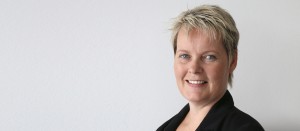
Photo from A2SEA News
Kirsten Bank Christensen is the Vice President of Group HSEQ at A2SEA and the Health and Safety Topic Chair for EWEA OFFSHORE 2015. A2SEA prides itself on its safety culture, which pursues a goal of zero harm and empowers each of its employees to make their own and their colleagues’ safety a top priority. In this interview, Christensen previews some of the topics that will be discussed during her session Managing Risk: Reducing Cost session at EWEA OFFSHORE 2015 on Wednesday, 11 March, 14:30-16:00.
December 4, 2014
Working together to develop large scale offshore wind
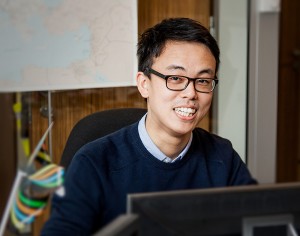
Andrew Ho, EWEA Offshore Analyst
Yesterday, the EWEA Offshore Working Group met in Brussels for the first time under the leadership of the new chairman, Ulrik Stridbaek, Head of Group Regulatory Affairs at DONG Energy.
The mission of the working group is to demonstrate that offshore wind is vital to Europe’s energy portfolio, security and obligations to the de-carbonised economy. The group works together to seek out and implement cost reduction via industry practice and within the regulatory environment.
December 3, 2014
Late breaking technology at EWEA OFFSHORE 2015
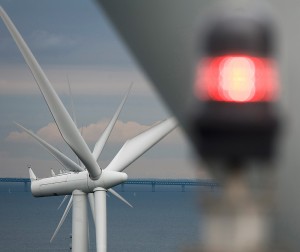 In an exciting new conference session of late breaking technology news and updates, you’ll get the latest word on key aspects of the offshore wind industry. The call for abstracts on late breaking technology closes on 14 December. Competition is high, as only the best will be selected for presentation in one dedicated session.
In an exciting new conference session of late breaking technology news and updates, you’ll get the latest word on key aspects of the offshore wind industry. The call for abstracts on late breaking technology closes on 14 December. Competition is high, as only the best will be selected for presentation in one dedicated session.
The late breaking technology session offers individuals the unique opportunity to show their red-hot findings and developments, which have not been presented anywhere else. This sneak preview of offshore wind energy technology is sure to stimulate lively discussions amongst conference delegates.
“Offshore wind is developing into an industry on its own”
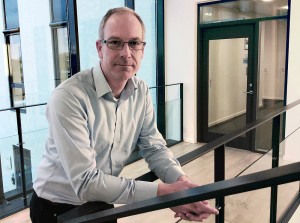
Jesper Månsson, LM Wind Power
We spoke to Jesper Månsson, Director of Technical Business Development at LM Wind Power and Topic Leader for Turbine Technology, about the development of the industry over the last 10 years and the years to come.
It’s been ten years since EWEA OFFSHORE was last in Copenhagen, where was offshore turbine technology then?
November 6, 2014
Experience it all – for less
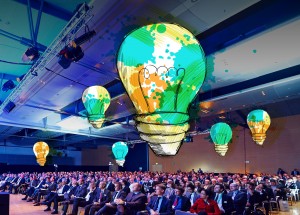 Offshore wind is now demonstrating its enormous potential as a scalable resource for Europe and the world. But, for the offshore wind industry to become fully competitive, it needs to bring down the costs across the whole of the supply chain.
Offshore wind is now demonstrating its enormous potential as a scalable resource for Europe and the world. But, for the offshore wind industry to become fully competitive, it needs to bring down the costs across the whole of the supply chain.
At EWEA OFFSHORE 2015, 300+ presenters will share their expertise and insights on how to build a fully competitive industry for all.
October 16, 2014
Exhibition will house industry’s biggest players
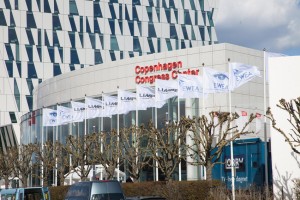 The world’s largest offshore wind energy conference and exhibition featuring the biggest players in the industry, including A2 SEA, ABB, ALSTOM, CG, DONG Energy, DNV-GL, EnBW, GAMESA, INGETEAM, LM WIND POWER, MHI-VESTAS, PRYSMIAN, RES, SENVION, SIEMENS and WPD and many more, will unite the whole of the offshore wind energy supply chain under one roof next March.
The world’s largest offshore wind energy conference and exhibition featuring the biggest players in the industry, including A2 SEA, ABB, ALSTOM, CG, DONG Energy, DNV-GL, EnBW, GAMESA, INGETEAM, LM WIND POWER, MHI-VESTAS, PRYSMIAN, RES, SENVION, SIEMENS and WPD and many more, will unite the whole of the offshore wind energy supply chain under one roof next March.
With hundreds of companies from around the globe already confirmed, the exhibition halls at EWEA OFFSHORE 2015 will showcase a multitude of cutting-edge technological developments as well as being a hive of business activity.
What’s new in the conference?
 Year on year, based on carefully analysed feedback from participants, EWEA applies numerous innovative ways to enhance the learning experience. The 2015 edition will see some major changes to the conference programme. It is now designed under nine topic headings, helping you to better identify your fields of interest. Previously, EWEA designed the conference programme around four broad themes and you told us your specific interest was not visible enough. So, EWEA has taken steps to make sure that your topics of interest are addressed.
Year on year, based on carefully analysed feedback from participants, EWEA applies numerous innovative ways to enhance the learning experience. The 2015 edition will see some major changes to the conference programme. It is now designed under nine topic headings, helping you to better identify your fields of interest. Previously, EWEA designed the conference programme around four broad themes and you told us your specific interest was not visible enough. So, EWEA has taken steps to make sure that your topics of interest are addressed.
“Thinking bigger” on ways to bring down costs
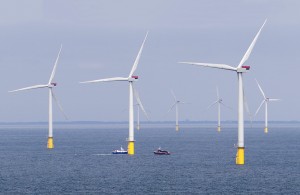
© Siemens AG
Big problems need big solutions and at EWEA OFFSHORE 2015 the topic on everyone’s lips will be bringing down the costs of offshore wind. How can we “think bigger” on ways to solve the cost problem?
Capital costs in offshore wind are significantly higher than the capital costs of onshore wind – what can be done to close this gap? Where can the biggest cost reductions be made, and by when might we be seeing a reduction in the costs of offshore?
October 15, 2014
Industry leaders united to succeed
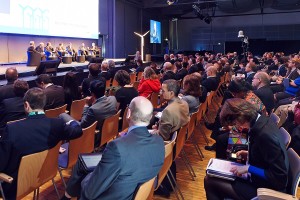 Samuel Leupold, Executive Vice President for wind power at DONG Energy, Jens Tommerup, CEO of MHI Vestas, and Michael Hannibal, CEO Offshore of Siemens Wind Power Division, will act as Event Ambassadors for next year’s event – united in their vision to urge the EU’s political leaders to give offshore wind the political stability it needs.
Samuel Leupold, Executive Vice President for wind power at DONG Energy, Jens Tommerup, CEO of MHI Vestas, and Michael Hannibal, CEO Offshore of Siemens Wind Power Division, will act as Event Ambassadors for next year’s event – united in their vision to urge the EU’s political leaders to give offshore wind the political stability it needs.
Offshore wind is an essential part of a sustainable energy future for Europe. Without offshore wind, Europe will not meet its targets for renewables in 2030 and for climate protection in 2050; no other renewable technology can meet this challenge.
Follow EWEA on: